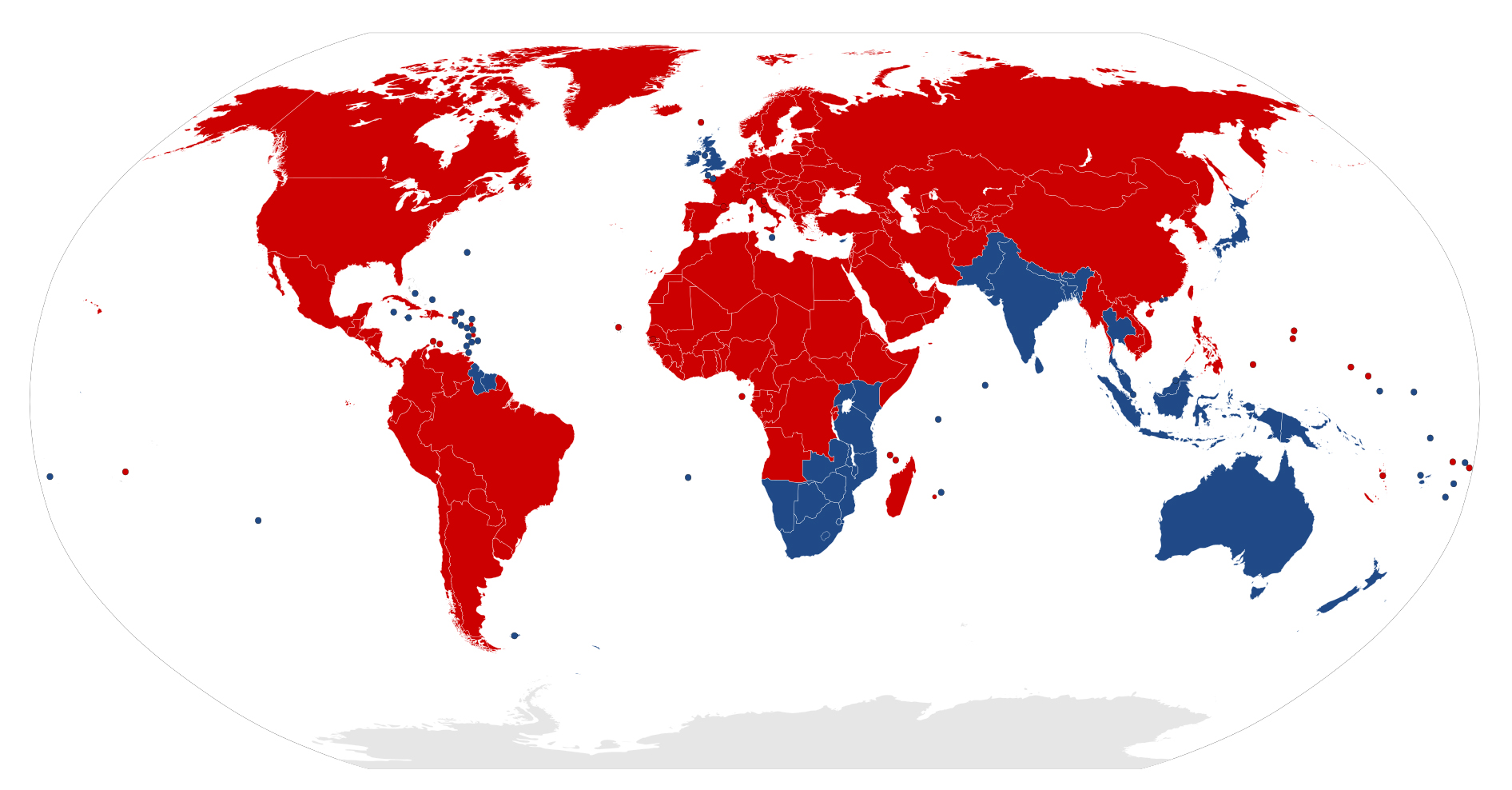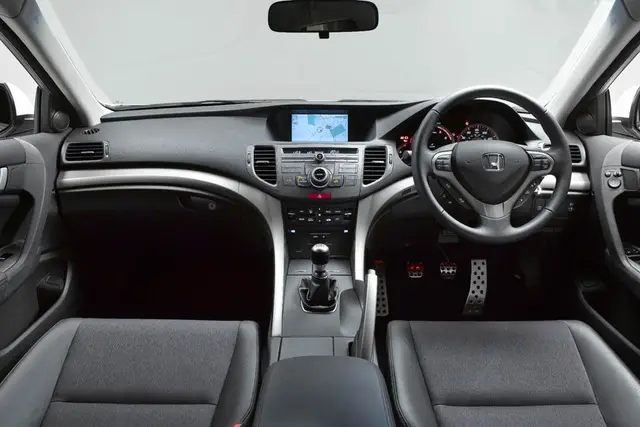Several dozen of the world's countries and territories stipulate that drivers must adhere to the left side of the road; the rest of the world, about two-thirds of the population, drives on the right.
The United Kingdom is perhaps the most well-known drive-left country. In most other countries that were once ruled or administered by the U.K. (or England or Great Britain, as it was known in previous years), drivers stick to the left. Also in this category is Japan.

The United States is perhaps the most well-known drive-right country. Other well-known countries in this category include China and most of Europe.
A complete list of drive-left countries is below. Any country or territory not on that list is drive-right.
The preference for driving on the left in the U.K. goes back centuries, to before motorized vehicles existed. In the Middle Ages, travelers walked or rode horses with an eye toward public safety, and this determined on what side of the road they walked or rode. Someone who traveled with a sword in a scabbard commonly wore the scabbard on the left side, in order to facilitate easy access to the sword by the right hand. (A large majority of people throughout history have been right-handed.) And someone who wanted to keep a sword between himself and an attacker would want to keep the sword-side toward the middle of the road, which meant that that person would walk on the left. The same was true, even more so, with armed men on horseback.
In a more friendly vein, a traveler who wished to greet a friend by extending the right hand, which has long been an established form of friendliness, would find that his right hand and that of the other traveler would both be close together, toward the middle of the road.
The horse connection extended through the years to drivers of horse-drawn carriages. In the same way, carriage drivers would want to have their sword hand at the ready, toward the middle of the road, and so they would drive their carriages on the left side of the road. As well, sword-carrying riders who were right-handed found it easier to mount a horse from the left side because the sword would be on the left, in a scabbard. Dismounting a horse is safer if the rider does so away from the flow of traffic; if the rider mounted on the left, then he likely dismounted on the left, and so the rider, in order to facilitate safe mounting and dismounting, would ride on the left side of the road.
Some historians, citing scattered evidence in a few different places, think that the Romans drove their chariots on the left side of the road, for the same reason. It is known that during chariot races, drivers raced counter-clockwise, with the right wheel on the inside.
The advent of large wagons as means of transporting goods from place to place in the 18th Century necessitated more than one or two horses. The sight of a four-horse team pulling a wagon full of goods was common. These wagons had no seat for the driver, so the driver of a four-horse team would sit on the left rear horse so he could hold the reins with his left hand and have his right arm free to lash the horses. (Again, this assumed that most people riding a horse were right-handed.) And if a rider was on the left side of his four-horse team and wanted to keep himself toward the middle of the road, the better to keep an eye on the road (and wagons) ahead, then the rider would steer his horses and wagon toward the right side of the road.
A different sort of traffic scheme existed in France. The upper classes walked and rode on the left side of the road, and the lower classes traveled on the right. In the wake of the French Revolution, the government instituted a keep-right rule in 1794. French drivers of wagons and motorized vehicles have driven on the right ever since.
Some countries have switched sides through the years, including the following:
-
Canada began as a drive-left country because it was a colony of Great Britain; some parts of Canada switched to drive-right, in large part to make it easier for drivers to go back and forth between Canada and its southern neighbor, the United States; by the 1930s, all of Canada was drive-right.
-
Sweden began as a drive-left country and switched in 1967, after a referendum supported the idea, in large part because all of the country's neighbors were drive-right.
-
China and Taiwan switched to drive-right in 1946.
-
Ghana switched to drive-right in 1974.
-
Samoa switched to drive-left in 2009.
The following countries and territories are drive-left:
- Anguilla
-
Antigua and Barbuda
-
Australia
-
Bahamas
-
Bangladesh

-
Barbados
-
Bermuda
-
Bhutan
-
Botswana
-
British Virgin Islands
-
Brunei
-
Cayman Islands
-
Channel Islands (Guernsey and Jersey)
-
Christmas Island
-
Cocos (Keeling) Islands
-
Cook Islands
-
Cyprus
-
Dominica
-
East Timor (Timor-Leste)
-
Falkland Islands
-
Fiji
-
Grenada
-
Guyana
-
Hong Kong
-
India
-
Indonesia
-
Ireland
-
Isle of Man
-
Jamaica
-
Japan
-
Kenya
-
Kiribati
-
Lesotho
-
Macau
-
Malawi
-
Malaysia
-
Maldives
-
Malta
-
Mauritius
-
Montserrat
-
Mozambique
-
Namibia
-
Nepal
-
New Zealand
-
Niue
-
Norfolk Island
-
Pakistan
-
Papua New Guinea
-
Pitcairn Islands
-
St. Helena
-
St. Kitts and Nevis
-
St. Lucia
-
St. Vincent and the Grenadines
-
Samoa
-
Seychelles
-
Singapore
-
Solomon Islands
-
South Africa
-
Sri Lanka
-
Suriname
-
Swaziland
-
Tanzania
-
Thailand
-
Tokelau
-
Tonga
-
Trinidad and Tobago
-
Turks and Caicos
-
Tuvalu
-
Uganda
-
United Kingdom
-
Virgin Islands (U.K. and U.S.)
-
Zambia
-
Zimbabwe